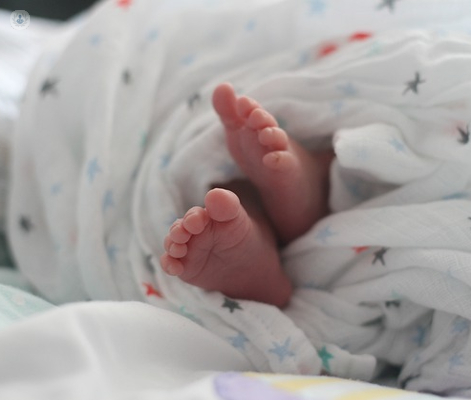Flat feet in children: Is correction always necessary?
Autore:Flat feet, a lack of arch in the soles of the feet, is common amongst newborn babies and in young children. Flat feet can cause concern for parents and health care professionals. Some children may need support with symptoms associated with the condition. In this article, leading consultant orthopaedic surgeon Mr Nigel Kiely, who specialises in paediatric orthopaedics, offers expert insight on how flat feet can affect some children and what treatment options are available.

What effect do flat feet have on children?
Flat feet in newborn children and toddlers are very common and quite normal. We would not expect flat feet in children to cause any symptoms unless there was some underlying problem.
Flat feet do not delay or prevent children from walking. We sometimes see babies with abnormalities in their feet at birth which can look like a flat foot but are different. This is often because there is a fixed deformity or the feet are stiff but this is uncommon.
What factor does the age of the child play in the development of flat feet?
Flat feet are very common in toddlers and most of the time they are normal. With growth, most flat feet will improve in shape. However, some feet will remain flat, but will not necessarily cause problems or require treatment.
Sometimes children will present with a painful, stiff and flat foot at an older age, such as in adolescence. In that case, we would look for an alternative diagnosis to explain the symptoms and the stiffness in the foot.
Can flat feet be prevented in toddlers?
There is a good amount of evidence to show that being barefoot as much as possible is good for the development of the foot because it encourages contact with the floor, use of the muscles and sensation. On the other hand, physiotherapy, special supportive shoes and insoles will not make any difference to the shape of your child’s foot, but can be used to ease symptoms of discomfort if they occur.
Do flat feet in children always need to be corrected?
In children with flat feet where the foot is flexible and there are no symptoms, treatment is not required. Between ten and twenty-five per cent of the adult population have flat feet and this rarely causes problems. Children and adults with flat feet usually have normal function and do not have any issues with sports, activities or shoewear.
What are the surgical and non-surgical treatment options for flat feet in children?
If a child has symptomatic feet, they may suffer from some side-effects of having flat feet, such as an outward tilting of the heel, difficulty with shoes or awkwardness in walking. Standard measures to ease these symptoms can include physiotherapy, insoles and supportive shoes. Despite not changing the shape of the foot, these treatments can relieve difficulties caused by flat feet.
There are certain conditions that can cause flat footedness in children. These can be due to structural problems in the foot, inflammation or muscle imbalance. The best treatment therefore would depend on the nature of the condition that is causing the flat footedness.
Surgical options can range from fairly small operations to major surgical reconstructions and are based on an assessment of the underlying condition and its symptoms. The decision can be made about the best treatment plan for the individual after a consultation, examination and investigations.
If you are worried about flat feet in your child, you can book a consultation with Mr Kiely by visiting his Top Doctors profile.


